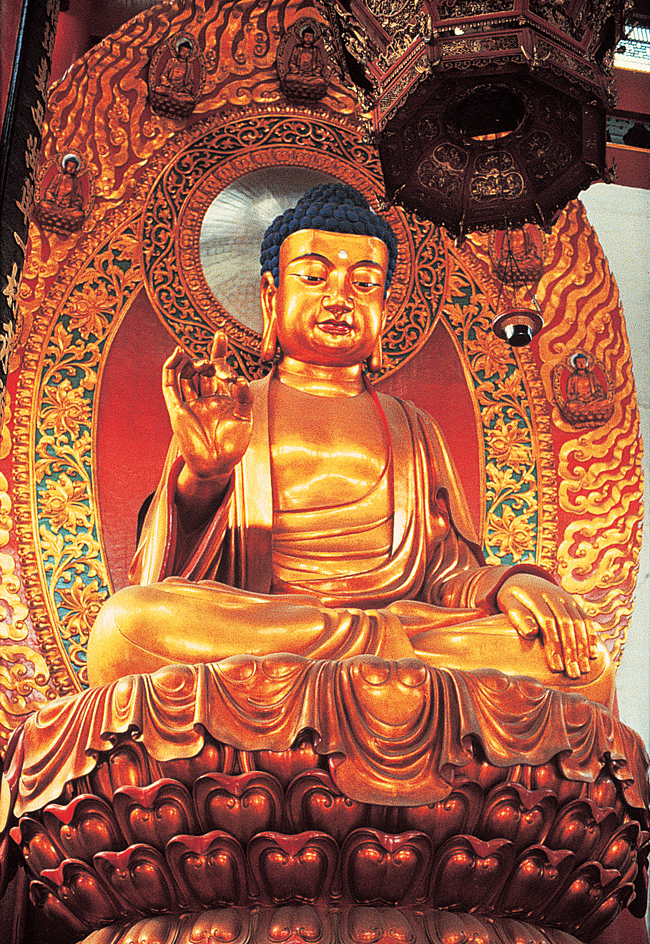Buddha, << BU duh or BOO duh >> (563?-483? B.C.), is the title given to the founder of Buddhism, one of the world’s great religions. Buddha’s name was Siddhartha Gautama. The title Buddha means Enlightened One.

Almost no authentic information exists about the details of Buddha’s life. But most scholars agree that such a man lived in northern India during the 500’s and 400’s B.C. Buddha’s followers spread the story of his life, and this story has an important place in Buddhism (see Buddhism).
Early life.
Archaeological excavations completed in 1995 indicate that Siddhartha Gautama was born in Nepal on the Nepal-India border, about 145 miles (233 kilometers) southwest of Katmandu. He spent his youth living in luxury in the palace of his father, the warrior prince Suddhodhana. When Gautama was about 20 years old, he married the princess Yasodhara.
When he was about 29, Gautama had a series of four visions. In the first vision, he saw an old man. In the second, he saw a sick man, and in the third, a corpse. In the fourth vision, he met a wandering holy man. The first three visions convinced Gautama that life involves aging, sickness, and death. The vision of the holy man convinced Gautama that he should leave his wife and newborn son, Rahula, and seek religious enlightenment. Such enlightenment would free him from life’s suffering.
The search for enlightenment.
Gautama became a wandering monk. For six years, he sought enlightenment by practicing extreme forms of self-denial and self-torture. He lived in filth and many days ate only a grain of rice. He also pulled out all the hairs of his beard, one by one. But Gautama finally decided that extreme self-denial and self-torture could never lead to enlightenment. He then abandoned such practices.
One day, Gautama wandered into a village near Gaya and sat under a shady bo tree, also called a bodhi tree. He decided to meditate under the tree until he gained enlightenment. Several hours later, enlightenment came. Others learned of his experience and began to call him Buddha.
Buddha learned from his enlightenment that people could find release from the suffering of life in nirvana, a state of complete happiness and peace. To achieve nirvana, people had to free themselves of all desires and worldly things. See Nirvana.
Later life.
For the rest of his life, Buddha preached the message of how to overcome suffering. This message is called the dharma, which means saving truth. Buddha preached his first sermon to five holy men in a park near the holy city of Varanasi. The delivery of this sermon is one of the most sacred events in Buddhism.
Buddha preached the dharma throughout northern India and gradually attracted disciples. As the number of his followers grew, Buddha organized them into a religious community of monks, nuns, and laity.
As Buddha’s fame increased, stories spread among his followers that dramatically described his magic powers, religious insight, and compassion. His followers believed that Buddha had lived many lives before he was born as Gautama. Many stories describe events of these lives. The stories, called jatakas, became popular and helped people understand Buddha’s message.
At the age of about 80, Buddha became ill and died. His disciples gave him an elaborate funeral, burned his body, and distributed his bones as sacred relics. Many Buddhists believe his power is still present in these relics and in the many images of Buddha.
See also Buddhism with its list of Related articles.
